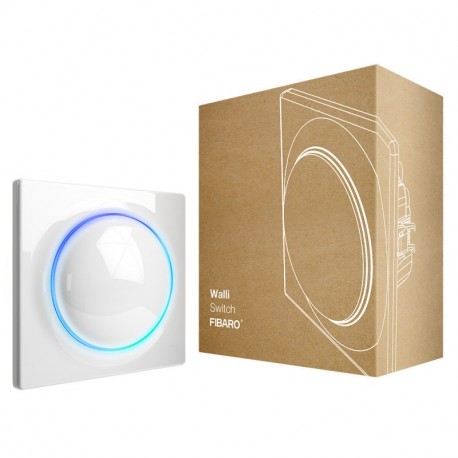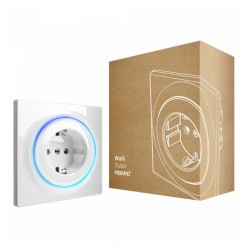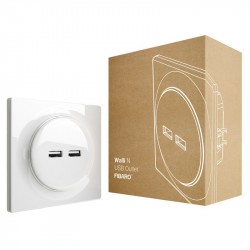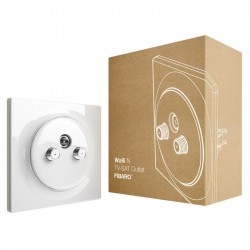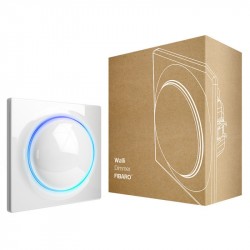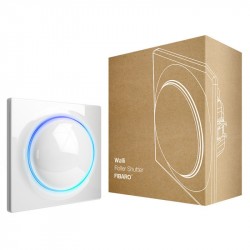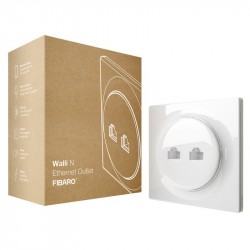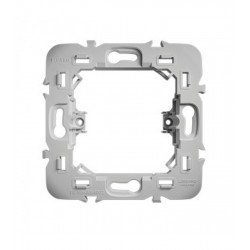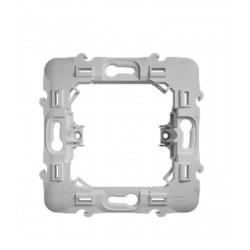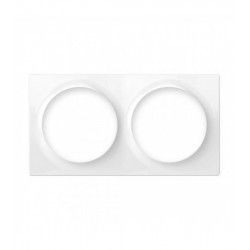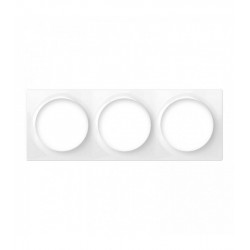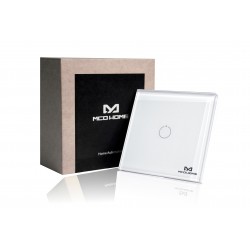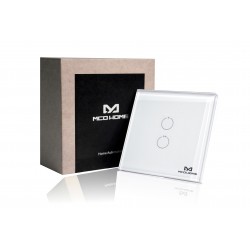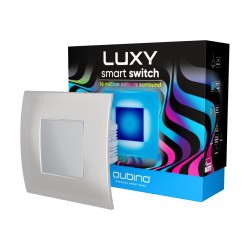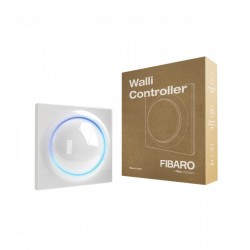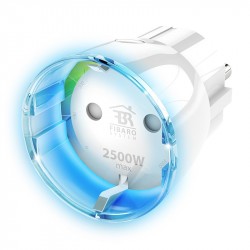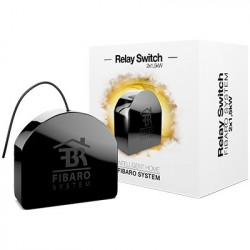Sem produtos
Preços com IVA
Produto adicionado com sucesso ao seu carrinho de compras
Existem 0 produtos no seu carrinho de compras. Existe um produto no seu carrinho de compras.
FIBARO - Interruptor Walli
FGWDSEU-221
Novo
O switch FIBARO Walli é um switch inteligente que pode controlar uma ou duas cargas de forma independente. Compatível com Z-Wave
Em estoque
- Retirar este produto da minha lista de favoritos.
- Adicionar este produto à minha lista de favoritos.
Características tecnicas
| Tecnologia | Z-Wave Plus |
Mais Informação
Interruptor inteligente Z-Wave + interruptor Fibaro Walli
O FIBARO Walli Switch é um interruptor inteligente que pode controlar uma ou duas cargas de forma independente. Ele é projetado para instalação rápida em caixas embutidas e é equipado com um anel de LED e os recursos conhecidos e reconhecidos dos módulos Fibaro.
Design exclusivo e tecnologia excepcional
A série completa de conectores e conectores inteligentes FIBARO baseados na tecnologia Z-Wave proporcionará à sua casa uma inteligência versátil. O visual da série é inspirado em uma pérola - sua sofisticação intemporal e bela forma que completa qualquer interior.

Anel LED para combinar com sua casa
Escolha sua cor favorita
Selecione a cor do anel de LED para adaptá-lo às suas preferências pessoais.
Botão duplo de luz de fundo
Use duas cores de luz de fundo onde quiser - uma cor diferente na parte inferior e outra na parte superior para ver o status exato do dispositivo.
Uma visão geral do consumo de energia
Controle a quantidade de energia consumida pelo equipamento em sua casa.
Componentes confiáveis e detalhes atraentes
Na FIBARO, qualidade e design únicos sempre andam de mãos dadas. A linha Walli foi projetada para melhorar o conforto e a segurança de sua família por muitos anos.

Pulsações a gosto
Configure o botão de comutador Walli para aproveitar ao máximo seus incríveis recursos.
Um único clique para acender a luz, um duplo clique para desligá-lo, um clique triplo para ativar a cena "Fun", uma pulsação mantida para intensidade de luz de 60%.
Compatível com produtos de outros fabricantes
O FIBARO Walli é compatível (com adaptadores) com placas frontais de outros fabricantes: GIRA - System 55, Legrand - Céliane, Schneider - Odace. Se estiver conectado a tomadas e comutadores existentes, equipe-os com uma peça inteligente integrada e aproveite os recursos de uma casa inteligente sem precisar substituir o painel frontal.

Gerencie toda a casa com voz
Os interruptores e tomadas inteligentes da Walli são totalmente compatíveis com os famosos assistentes de voz do Google Assistant e do Amazon Alexa. Gerenciamento de voz fácil e confortável de toda a casa.

Seja com sua casa onde quer que você esteja
A aplicação móvel FIBARO Home Center permite-lhe gerir interruptores e tomadas inteligentes com o seu smartphone, tablet ou smartwatch. Mantenha tudo sob controle como um chefe.

Consumo de energia controlada
Dê uma olhada em sua casa, analise o consumo de energia de seus aparelhos e otimize suas despesas como sempre quis.
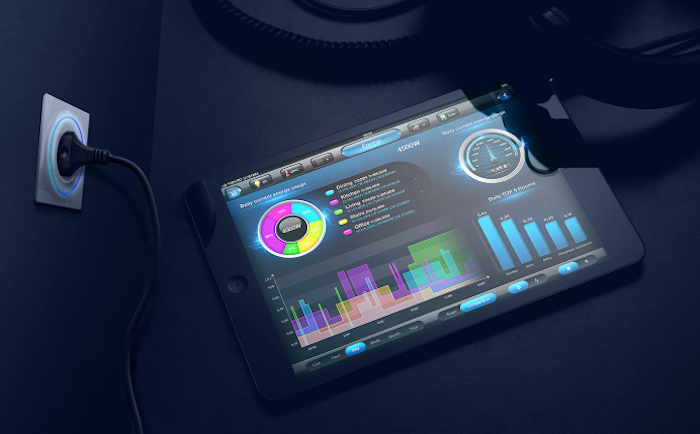
Dê um passo adiante no futuro
A série Walli da FIBARO inclui interruptores e tomadas clássicas e não inteligentes para manter constante a estética da sua casa. Escolha-os como desejar e desfrute de um design e recursos exclusivos.

Atenção: tenha cuidado, este interruptor requer que o neutro opere.
FUNÇÕES
Gerencie dispositivos e cenas com um único clique.
Gerenciamento remoto de dispositivos elétricos.
Gestão de dispositivos através de comandos de voz.
Adaptação do anel luminoso às preferências do usuário.
Notificações de falhas de equipamentos elétricos.
Controle do consumo de energia.
AS ESPECIFICAÇÕES TÉCNICAS
Potência: 110-230V 50 / 60Hz
Corrente de carga nominal: 13 A por canal, 16 Um total
Tipos de carga suportados: lâmpadas tubulares incandescentes, transformadores eletrônicos, transformadores ferromagnéticos, LEDs.
Radiofreqüência: 868.0-868.6 megahertz
Âmbito: até 40 m no interior (dependendo do terreno e da estrutura do edifício)
Potência máxima de transmissão: + 6dBm
Temperatura de operação: 0-35 ° C
Umidade ambiente: 10-95% RH sem condensação
Para instalação em caixas: Ø = 60mm, profundidade e 40mm
Dimensões (A x L x P): 86 x 86 x 51 mm
Toda a documentação e instruções dos produtos Fibaro estão disponíveis no site manuals.fibaro.com
Informação alargada da Z-Wave (Inglês)
Descarregue o manual a partir de aqui.
1. Power the device.
2. Set the main controller into remove mode (see the controller’s manual).
3. Quickly, three times click one of the buttons.
4. LED will start blinking yellow, wait for the removing process to end.
5. Successful removing will be confirmed by the Z-Wave controller’s message and red LED colour.
1. Quickly, three times click, then press and hold one of the buttons to enter the menu.
2. Release the button when the device glows yellow.
3. Quickly click the button to confirm.
4. After a few seconds the device will be restarted, which is signalled with the red LED colour.
"If you are adding in Security S2 Authenticated, input the underlined part of the DSK (label on the bottom of the box)."
1. Power the device.
2. Set the main controller in (Security/non-Security Mode) add mode (see the controller’s manual).
3. Quickly, three times click one of the buttons.
4. If you are adding in Security S2 Authenticated, scan the DSK QR code or input the underlined part of the DSK (label on the bottom of the box).
5. LED will start blinking yellow, wait for the adding process to end.
6. Adding result will be confirmed by the Z-Wave controller’s message and the LED frame:
- Green - successful (non-secure, S0, S2 non-authenticated),
- Magenta - successful (Security S2 Authenticated),
- Red – not successful.
To add the device to the Z-Wave network using SmartStart:
1. Set the main controller in Security S2 Authenticated add mode (see the controller’s manual).
2. Scan the DSK QR code or input the underlined part of the DSK (label on the bottom of the box).
3. Power the device.
4. Wait for the adding process to start (up to few minutes), which is signaled with yellow LED blinking.
5. Adding result will be confirmed by the Z-Wave controller’s message and the LED frame:
- Green - successful (non-secure, S0, S2 non-authenticated),
- Magenta - successful (Security S2 Authenticated),
- Red – not successful.




